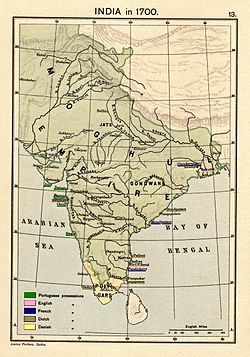
Emperor of Hindustan or the Emperor of India, [Note 1] is the imperial title used by the Delhi Sultanate [1] and then their successors, the Sur Empire and the Mughal Empire [2] [3] It signified their sovereignty over Northern India and later much of the Indian subcontinent.
Contents

The term Hindustan was used for Northern India in particular, and also the whole Indian subcontinent during the Medieval period. During the rule of the Mughal Empire in the 16th century, the term was equivalent to Emperor of India.
Even after effective Mughal rule had collapsed by about 1720, the Mughal dynasty continued to be recognised as the ceremonial rulers of India by regional powers in India, such as the Maratha Confederacy, the British East India Company and many other Indian polities, until Mughal rule was formally abolished in 1858. For example, the East India Company issued coinage in the name of the Mughal emperors until 1835.

